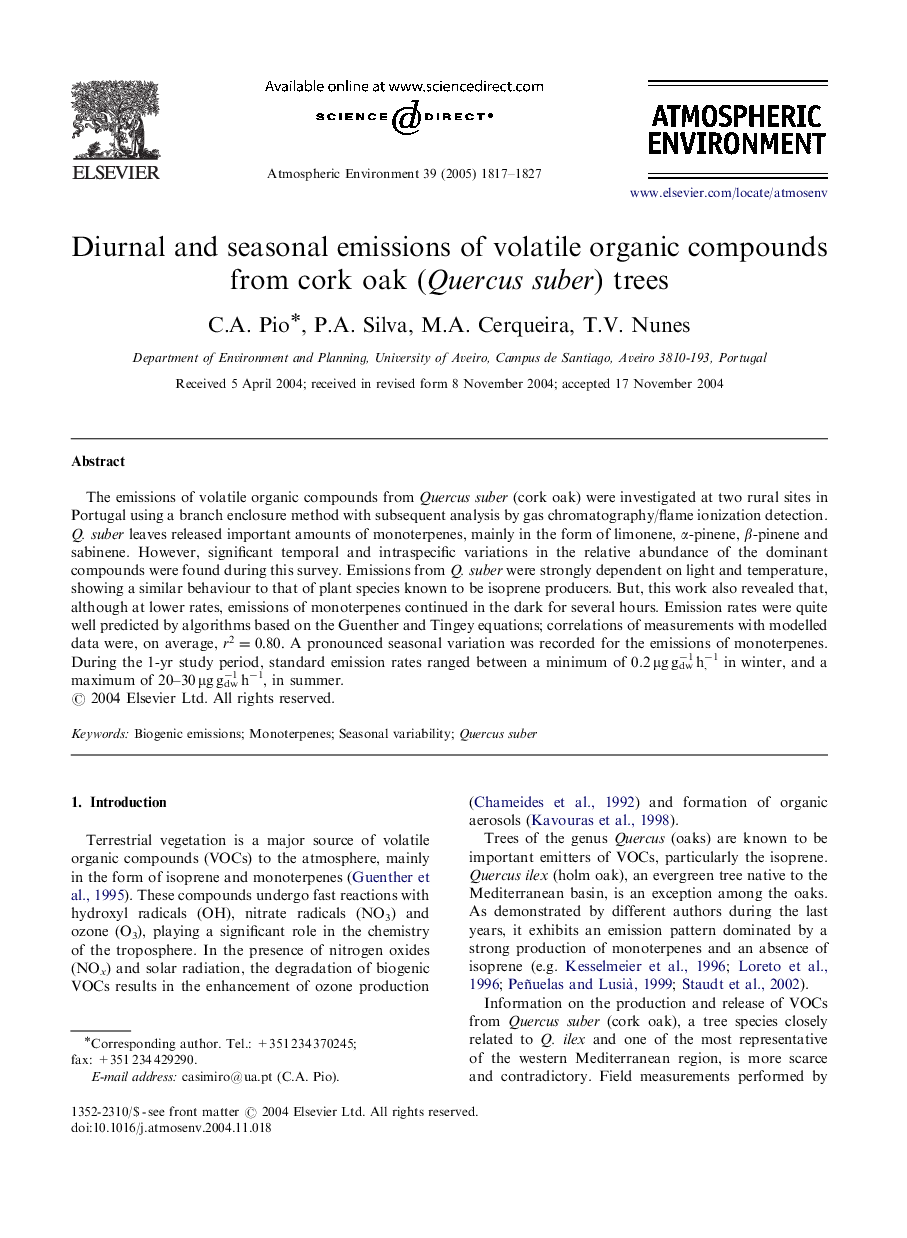| Article ID | Journal | Published Year | Pages | File Type |
|---|---|---|---|---|
| 9458821 | Atmospheric Environment | 2005 | 11 Pages |
Abstract
The emissions of volatile organic compounds from Quercus suber (cork oak) were investigated at two rural sites in Portugal using a branch enclosure method with subsequent analysis by gas chromatography/flame ionization detection. Q. suber leaves released important amounts of monoterpenes, mainly in the form of limonene, α-pinene, β-pinene and sabinene. However, significant temporal and intraspecific variations in the relative abundance of the dominant compounds were found during this survey. Emissions from Q. suber were strongly dependent on light and temperature, showing a similar behaviour to that of plant species known to be isoprene producers. But, this work also revealed that, although at lower rates, emissions of monoterpenes continued in the dark for several hours. Emission rates were quite well predicted by algorithms based on the Guenther and Tingey equations; correlations of measurements with modelled data were, on average, r2=0.80. A pronounced seasonal variation was recorded for the emissions of monoterpenes. During the 1-yr study period, standard emission rates ranged between a minimum of 0.2 μg gdwâ1 hâ1, in winter, and a maximum of 20-30 μg gdwâ1 hâ1, in summer.
Related Topics
Physical Sciences and Engineering
Earth and Planetary Sciences
Atmospheric Science
Authors
C.A. Pio, P.A. Silva, M.A. Cerqueira, T.V. Nunes,
